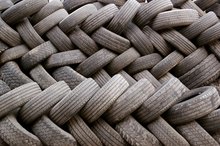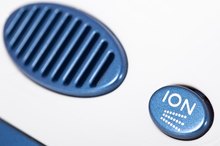Health Effects of Poor Air Quality
Poor air quality is a problem all over the world. Polluted air is linked to a variety of health concerns, ranging from short-term irritation to serious diseases or even death. Much of the pollution that's affecting our air comes from human activities. It is a result of manufacturing, transportation and a dependence on fossil fuels like gas and coal. Exposure to pollutants like smog, sulfates, nitrates and carbon can have a significant impact on both human health and the health of the earth.
Short- and Long-Term Health Effects
According to the World Health Organization (WHO), pollutants like nitrous oxide and sulfer dioxide cause inflamed airways, eye irritation and damage to the respiratory tract. An irritated respiratory tract can induce coughing, mucus secretion and long-term infections. It is particularly damaging to those with asthma or compromised immune systems. Over time, exposure to poor air quality can lead to reduced lung function and breathing problems as well as lung cancer or cardiovascular disease. Those with pre-existing cardiovascular or lung diseases are particularly vulnerable to the effects of pollution, and may find their conditions worsened due to exposure.
- According to the World Health Organization (WHO), pollutants like nitrous oxide and sulfer dioxide cause inflamed airways, eye irritation and damage to the respiratory tract.
- Over time, exposure to poor air quality can lead to reduced lung function and breathing problems as well as lung cancer or cardiovascular disease.
Life Expectancy
The 15 Most Deadly Countries for Air Pollution
Learn More
Air pollution has a staggering impact on life expectancy and mortality rates. According to the WHO, more than two million people die prematurely each year due to the effects of poor air quality. Even in relatively "clean" areas, life expectancies are shortened by 8.6 months on average due to pollution from human activities. Mortality rates increase by 0.3 percent each day for every 10 micrograms per cubic meter increase in pollution or smog within a region.
The WHO estimates that cities with relatively high levels of pollution have a 15 to 20 percent higher rate of mortality than cities with relatively low levels of pollution.
- Air pollution has a staggering impact on life expectancy and mortality rates.
- According to the WHO, more than two million people die prematurely each year due to the effects of poor air quality.
Indoor Air Quality
According to the U.S. Environmental Protection Agency, air quality inside the home is often two to five times worse than it is outdoors. After certain activities, like painting or floor removal, the air in your home can be up to 1,000 times worse than the air outside. This is due to off-gassing of volatile organic compounds (VOCs) found in paint, adhesives and many everyday objects in the home. Exposure to poor indoor air quality can cause short-term eye, nose and throat irritation as well as headaches, dizziness and fatigue. It can also exacerbate the effects of asthma, particularly in children. Over time, this exposure can lead to respiratory disease, cardiovascular disease or even cancer.
- According to the U.S. Environmental Protection Agency, air quality inside the home is often two to five times worse than it is outdoors.
- After certain activities, like painting or floor removal, the air in your home can be up to 1,000 times worse than the air outside.
Related Articles
References
- U.S. Environmental Protection Agency: A Guide to Indoor Air Quality
- U.S. Environmental Protection Agency: Volatile Organic Compounds
- Centers for Disease Control and Prevention. Agencies for Toxic Substances and Disease Registry. What Are Possible Sources of Indoor Air Pollution? Updated 08/09/16. https://www.atsdr.cdc.gov/csem/csem.asp?csem=33&po=7
- Hansel NN, Mccormack MC, Kim V. The Effects of Air Pollution and Temperature on COPD. COPD. 2016;13(3):372-9. doi:10.3109/15412555.2015.1089846
- Marć M, Śmiełowska M, Namieśnik J, Zabiegała B. Indoor air quality of everyday use spaces dedicated to specific purposes-a review. Environ Sci Pollut Res Int. 2018;25(3):2065-2082. doi:10.1007/s11356-017-0839-8
- EPA. Health Risk of Radon. 2019.
- Pegas PN, Alves CA, Nunes T, Bate-epey EF, Evtyugina M, Pio CA. Could houseplants improve indoor air quality in schools? J Toxicol Environ Health Part A. 2012;75(22-23):1371-80. doi:10.1080/15287394.2012.721169
- Laumbach RJ. Outdoor air pollutants and patient health. Am Fam Physician. 2010;81(2):175-80.
- Wang C, Xu J, Yang L, et al. Prevalence and risk factors of chronic obstructive pulmonary disease in China: a national cross-sectional study. Lancet. 2018;391(10131):1706-1717. doi:10.1016/S0140-6736(18)30841-9
- Laumbach R, Meng Q, Kipen H. What can individuals do to reduce personal health risks from air pollution? J Thorac Dis. 2015;7(1):96-107. doi:10.3978/j.issn.2072-1439.2014.12.21
- Centers for Disease Control and Prevention. Agencies for Toxic Substances and Disease Registry. What Are Possible Sources of Indoor Air Pollution? Updated 08/09/16.
- Li, J., Sun, S., Tang, R. et al. Major Air Pollutants and Risk of COPD Exacerbations: A Systematic Review and Meta-Analysis. International Journal of Chronic Obstructive Pulmonary Disease. 2016. 11:3079-3091.
- Ling, S., and S. Eeden. Particulate Matter Air Pollution Exposure: Role in the Development and Exacerbation of Chronic Obstructive Pulmonary Disease. International Journal of Chronic Obstructive Pulmonary Disease. 2009. 4:233-243.
- Liu, Y., Yan, S., Poh, K., Liu, S., Ivioriobhe, E., and D. Sterling. Impact of Air Quality Guidelines on COPD Sufferers. International Journal of Chronic Obstructive Pulmonary Disease. 2016. 11:839-72.
Writer Bio
Emily Beach works in the commercial construction industry in Maryland. She received her LEED accreditation from the U.S. Green Building Council in 2008 and is in the process of working towards an Architectural Hardware Consultant certification from the Door and Hardware Institute. She received a bachelor's degree in economics and management from Goucher College in Towson, Maryland.









